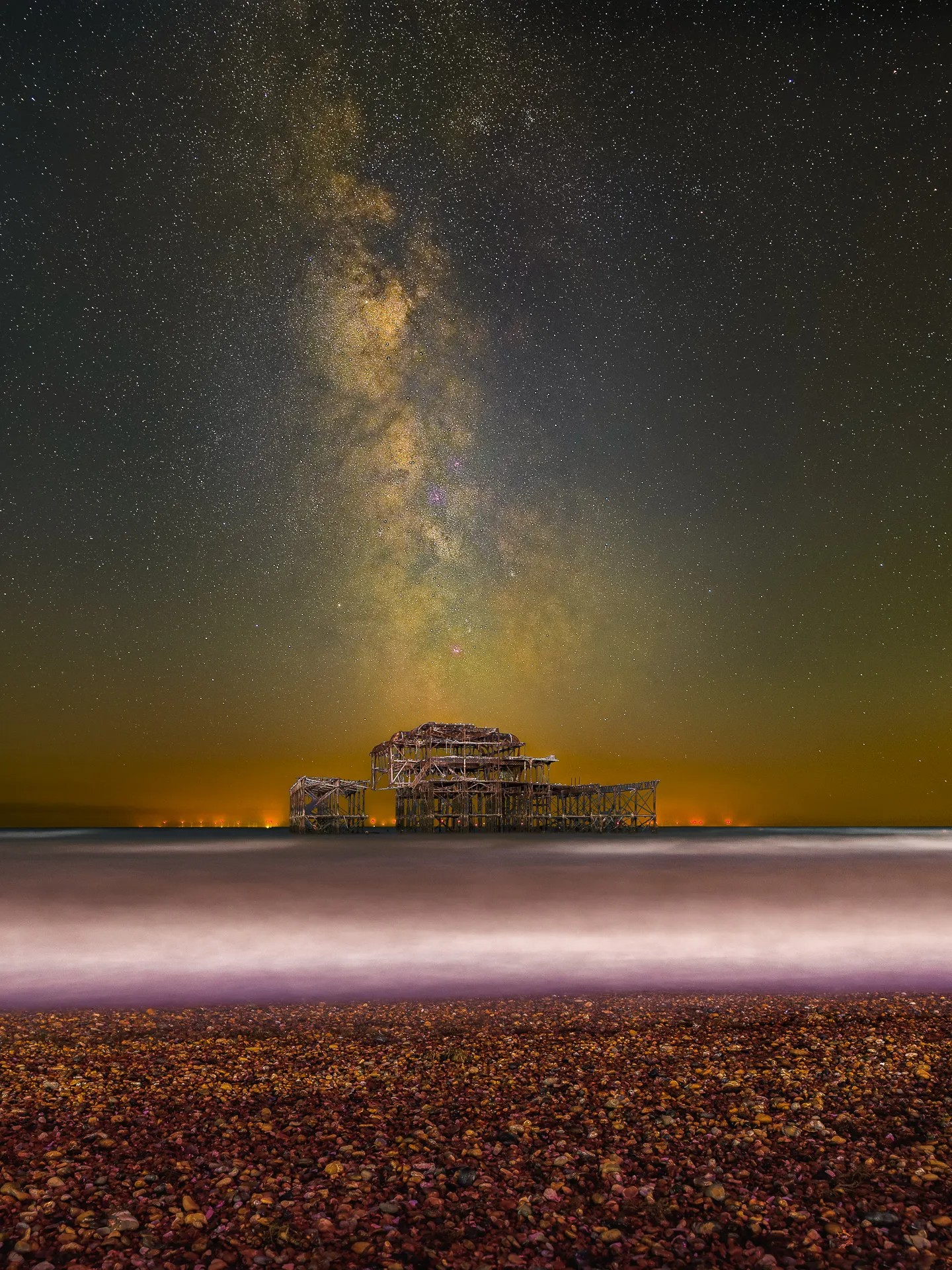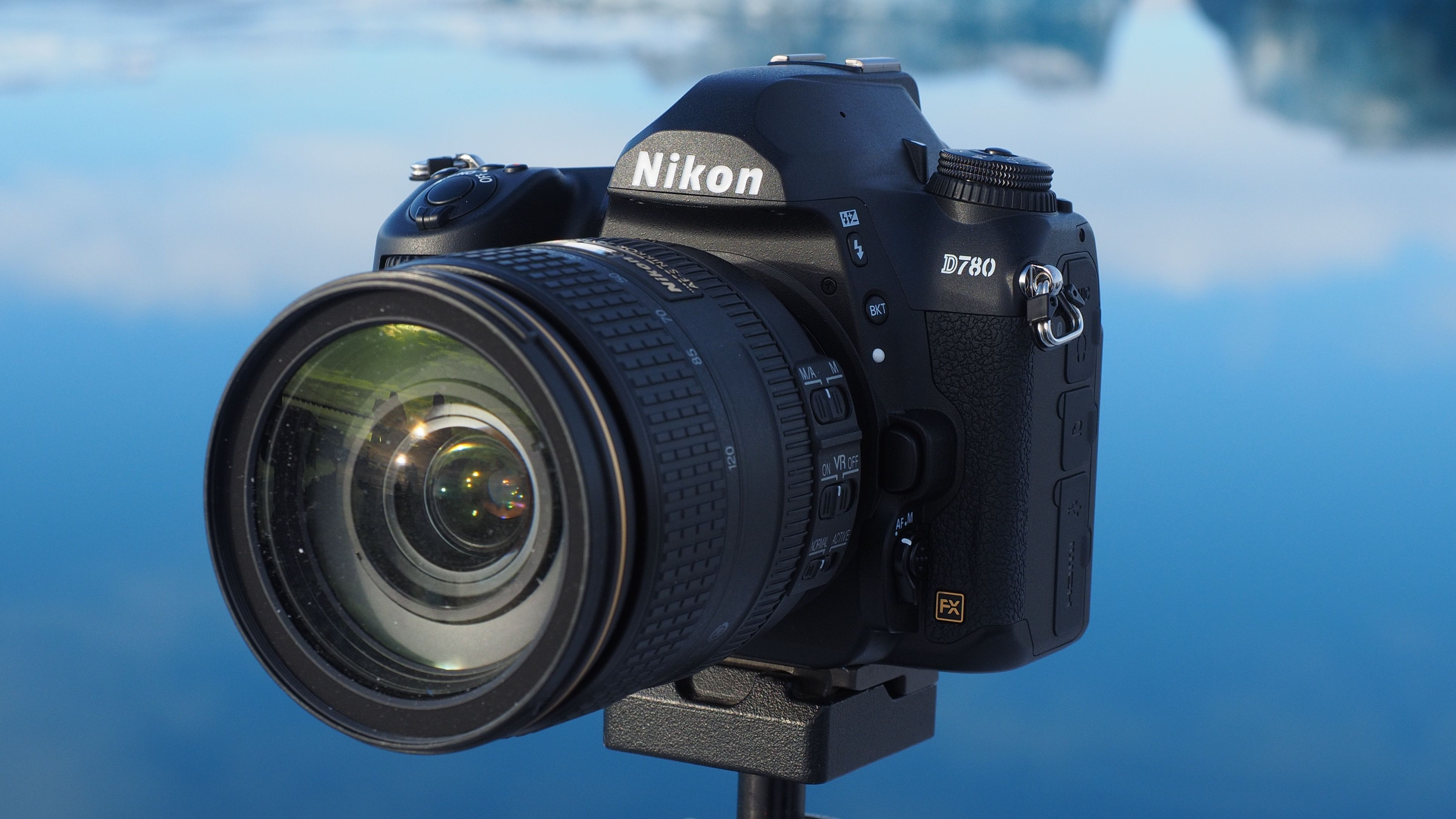
The winners of the 2025 British Photography Awards (BPA) have been announced, and for me, one image stood out from the pack – a shot that seems almost impossible. In fact, the photographer was as surprised as anyone else.
The photograph shows the Milky Way, captured in rich detail, despite being taken above the light-soaked seafront of Brighton, UK. The image, Milky Way over the West Pier, by astrophotographer Michael Steven Harris, won the People’s Choice award, and I'm really not surprised.
“Whilst I knew it was possible to shoot the Milky Way from this location, I didn’t expect to achieve such a high amount of detail,” he says. “The pier is just a few hundred metres from Brighton’s city lights.”
The resulting image shows our galaxy rising like a ghostly ribbon above the skeletal remains of the Grade I-listed West Pier, framed by the glow of distant wind farms. Orange clouds of dust and gas swirl across the galactic core, while the pinkish tones of the Eagle (M16), Omega (M17), and Lagoon (M8) nebulae punctuate the scene. All details you'd assume would be impossible to capture in a city rated Bortle 6 on the light pollution scale.
How he managed it
For the uninitiated, the Bortle Scale runs from 1 (perfectly dark skies) to 9 (inner-city brightness). Brighton sits squarely at 6; bright enough to wash out faint stars and make deep-sky astrophotography a serious challenge. Astrophotographers typically drive hours to remote Bortle 3 or 2 locations to escape the glow. Harris decided to tackle it head-on.
His secret weapon? Not an exotic telescope or a modified camera, but careful technique. Using a Nikon D780 and a Tamron 24–70mm f/2.8 G2 lens, Harris shot a series of long exposures, later stacking them to reduce noise and bring out faint galactic structures. The foreground was captured in a single longer exposure and blended with the sky in post.
Stacking is a computational trick that’s revolutionised urban astrophotography. By aligning and averaging multiple frames, it boosts the signal-to-noise ratio, allowing real celestial detail to emerge while suppressing random noise and sky glow. Importantly, all photos were taken at the same time from the same location. There was no composite from different nights, no trick lighting. Just Brighton, the sea and the stars.
The best camera deals, reviews, product advice, and unmissable photography news, direct to your inbox!
The Nikon D780 proved surprisingly capable for the task. Its 24.3MP full-frame sensor handles low light beautifully, producing clean results even at high ISO settings. Combined with the Tamron’s sharp, coma-controlled optics, the setup delivered enough precision to resolve those faint nebulae; a testament to what’s possible with mainstream gear and meticulous processing.
In short, Harris’s image delivers a message to every city-based stargazer who’s ever been told their skies are too bright. With patience, planning, and a bit of clever stacking, even a Bortle 6 horizon can reveal the wonders of the universe.
You can view Milky Way over the West Pier and the other winning images through the British Photography Awards website – a great opportunity to explore the incredible range of British photography, from wildlife and landscape to street and portraiture.
You might like...
Browse the best cameras for astrophotography and the best lenses for astrophotography.
Looking for competitions to enter? Here are 10 global photo contests now open for entries from November to January.
Tom May is a freelance writer and editor specializing in art, photography, design and travel. He has been editor of Professional Photography magazine, associate editor at Creative Bloq, and deputy editor at net magazine. He has also worked for a wide range of mainstream titles including The Sun, Radio Times, NME, T3, Heat, Company and Bella.
You must confirm your public display name before commenting
Please logout and then login again, you will then be prompted to enter your display name.


